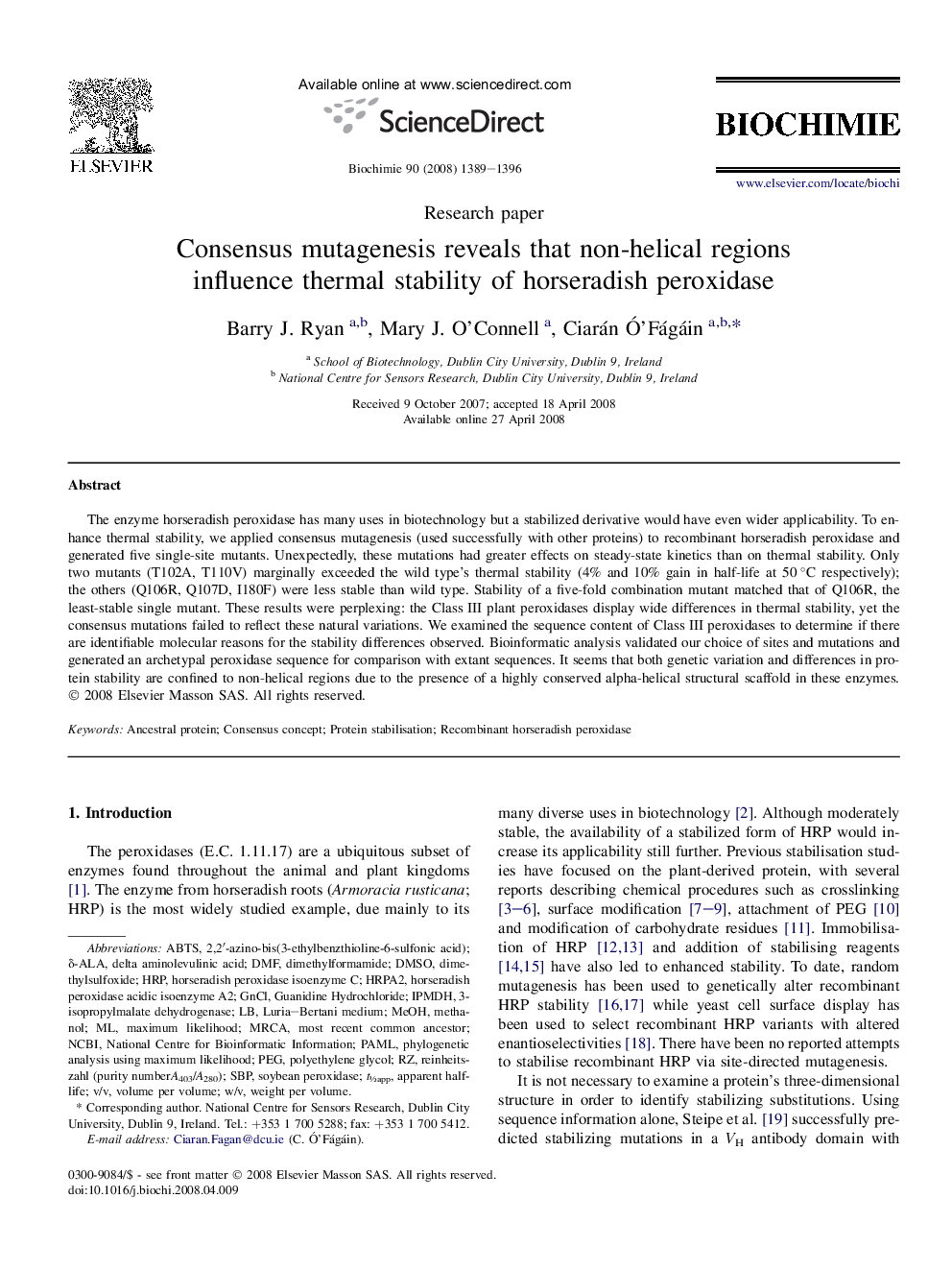| Article ID | Journal | Published Year | Pages | File Type |
|---|---|---|---|---|
| 1952865 | Biochimie | 2008 | 8 Pages |
The enzyme horseradish peroxidase has many uses in biotechnology but a stabilized derivative would have even wider applicability. To enhance thermal stability, we applied consensus mutagenesis (used successfully with other proteins) to recombinant horseradish peroxidase and generated five single-site mutants. Unexpectedly, these mutations had greater effects on steady-state kinetics than on thermal stability. Only two mutants (T102A, T110V) marginally exceeded the wild type's thermal stability (4% and 10% gain in half-life at 50 °C respectively); the others (Q106R, Q107D, I180F) were less stable than wild type. Stability of a five-fold combination mutant matched that of Q106R, the least-stable single mutant. These results were perplexing: the Class III plant peroxidases display wide differences in thermal stability, yet the consensus mutations failed to reflect these natural variations. We examined the sequence content of Class III peroxidases to determine if there are identifiable molecular reasons for the stability differences observed. Bioinformatic analysis validated our choice of sites and mutations and generated an archetypal peroxidase sequence for comparison with extant sequences. It seems that both genetic variation and differences in protein stability are confined to non-helical regions due to the presence of a highly conserved alpha-helical structural scaffold in these enzymes.
